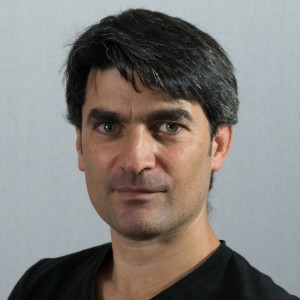
Transition Amplitudes in 3D Quantum Gravity: Boundaries and Holography in the Coloured Boulatov Model
C. Goeller, D. Oriti, G. Schmid
Annales Henri Poincare 24 (10), 3601-3684 (2023).
We consider transition amplitudes in the coloured simplicial Boulatov model for three-dimensional Riemannian quantum gravity. First, we discuss aspects of the topology of coloured graphs with non-empty boundaries. Using a modification of the standard rooting procedure of coloured tensor models, we then write transition amplitudes systematically as topological expansions. We analyse the transition amplitudes for the simplest boundary topology, the 2-sphere, and prove that they factorize into a sum entirely given by the combinatorics of the boundary spin network state and that the leading order is given by graphs representing the closed 3-ball in the large N limit. This is the first step towards a more detailed study of the holographic nature of coloured Boulatov-type GFT models for topological field theories and quantum gravity.

Mean-Field Phase Transitions in Tensorial Group Field Theory Quantum Gravity
L. Marchetti, D. Oriti, A. G. A. Pithis, J. Thürigen
Physical Review Letters 130 (14), 141501 (2023).
Controlling the continuum limit and extracting effective gravitational physics are shared challenges for quantum gravity approaches based on quantum discrete structures. The description of quantum gravity in terms of tensorial group field theory (TGFT) has recently led to much progress in its application to phenomenology, in particular, cosmology. This application relies on the assumption of a phase transition to a nontrivial vacuum (condensate) state describable by mean-field theory, an assumption that is difficult to corroborate by a full RG flow analysis due to the complexity of the relevant TGFT models. Here, we demonstrate that this assumption is justified due to the specific ingredients of realistic quantum geometric TGFT models: combinatorially nonlocal interactions, matter degrees of freedom, and Lorentz group data, together with the encoding of microcausality. This greatly strengthens the evidence for the existence of a meaningful continuum gravitational regime in group-field and spin-foam quantum gravity, the phenom-enology of which is amenable to explicit computations in a mean-field approximation.

Phase transitions in TGFT: a Landau-Ginzburg analysis of Lorentzian quantum geometric models
L. Marchetti, D. Oriti, A. G. A. Pithis, J. Thuerigen
Journal of High Energy Physics 2023, 74 (2023).
In the tensorial group field theory (TGFT) approach to quantum gravity, the basic quanta of the theory correspond to discrete building blocks of geometry. It is expected that their collective dynamics gives rise to continuum spacetime at a coarse grained level, via a process involving a phase transition. In this work we show for the first time how phase transitions for realistic TGFT models can be realized using Landau-Ginzburg mean-field theory. More precisely, we consider models generating 4-dimensional Lorentzian triangulations formed by spacelike tetrahedra the quantum geometry of which is encoded in non-local degrees of freedom on the non-compact group SL(2,C) and subject to gauge and simplicity constraints. Further we include Double-struck capital R-valued variables which may be interpreted as discretized scalar fields typically employed as a matter reference frame. We apply the Ginzburg criterion finding that fluctuations around the non-vanishing mean-field vacuum remain small at large correlation lengths regardless of the combinatorics of the non-local interaction validating the mean-field theory description of the phase transition. This work represents a first crucial step to understand phase transitions in compelling TGFT models for quantum gravity and paves the way for a more complete analysis via functional renormalization group techniques. Moreover, it supports the recent extraction of effective cosmological dynamics from TGFTs in the context of a mean-field approximation.

Complete Barrett-Crane model and its causal structure
A. F. Jercher, D. Oriti, A. G. A. Pithis
Physical Review D 106 (6), 66019 (2022).
The causal structure is a quintessential element of continuum spacetime physics and needs to be properly encoded in a theory of Lorentzian quantum gravity. Established spin foam [and tensorial group field theory (TGFT)] models mostly work with relatively special classes of Lorentzian triangulations (e.g., built from spacelike tetrahedra only) obscuring the explicit implementation of the local causal structure at the microscopic level. We overcome this limitation and construct a full-fledged model for Lorentzian quantum geometry the building blocks of which include spacelike, lightlike, and timelike tetrahedra. We realize this within the context of the Barrett-Crane TGFT model. Following an explicit characterization of the amplitudes via methods of integral geometry and the ensuing clear identification of local causal structure, we analyze the model's amplitudes with respect to its (space)time-orientation properties and provide also a more detailed comparison with the framework of causal dynamical triangulations.
